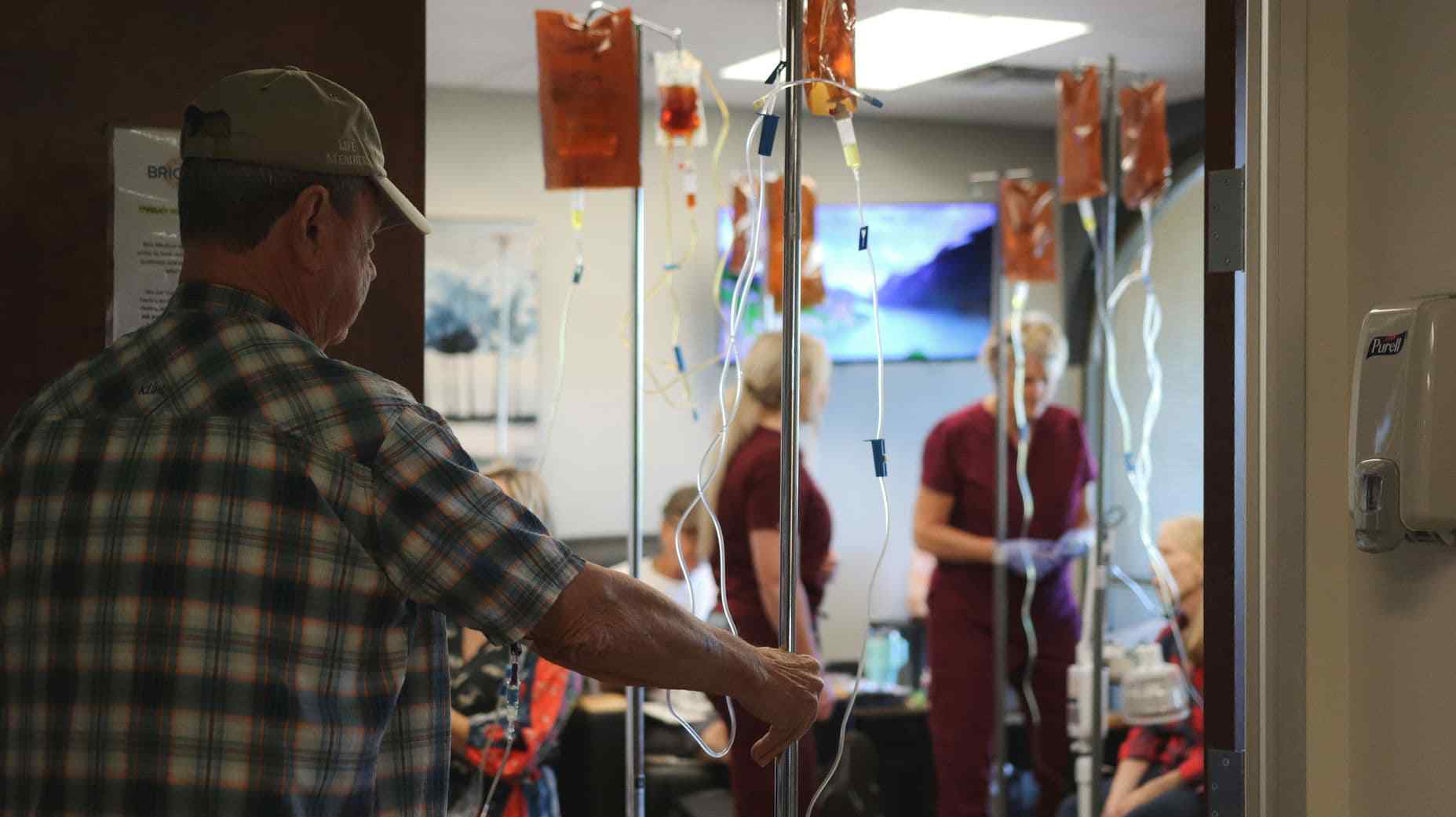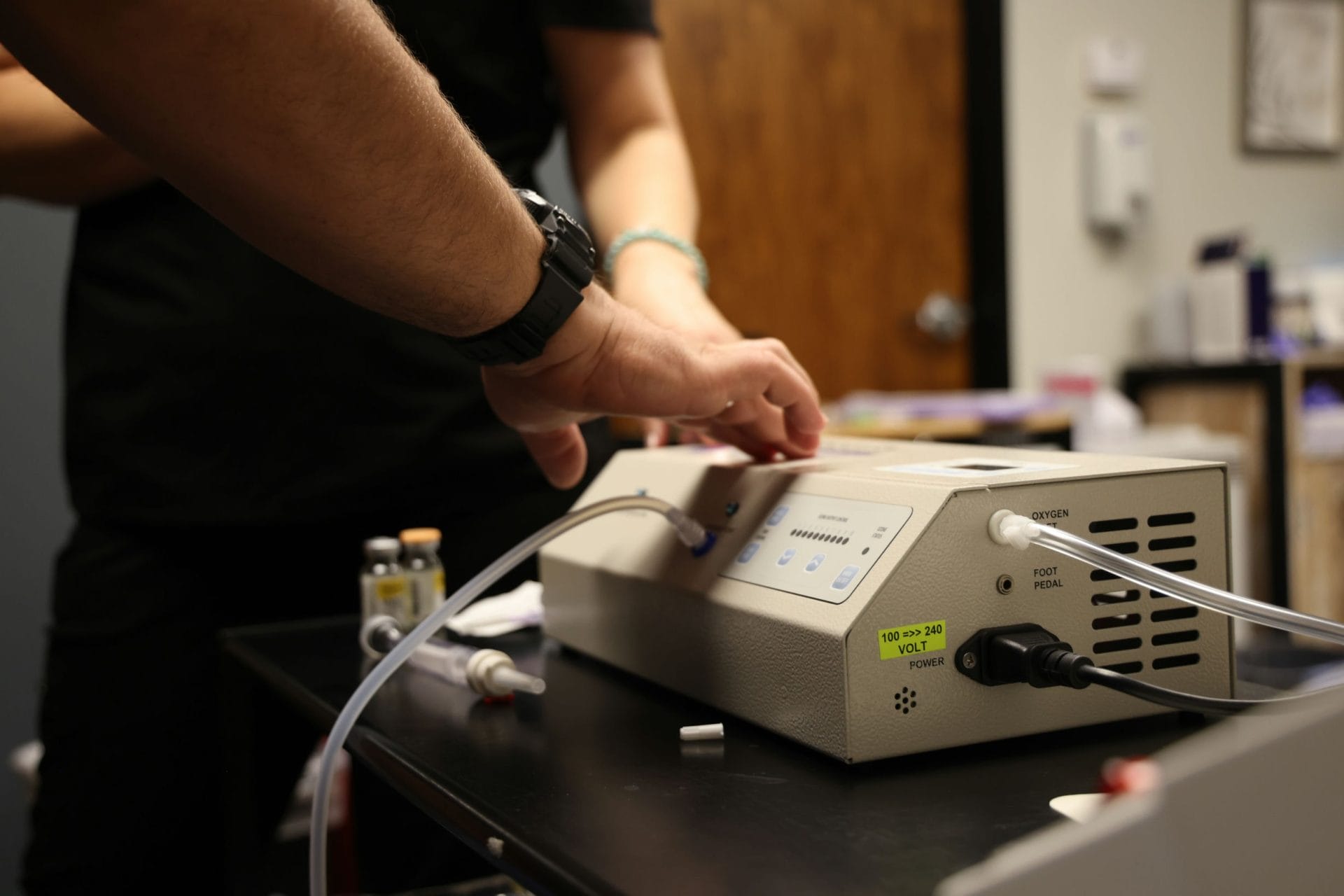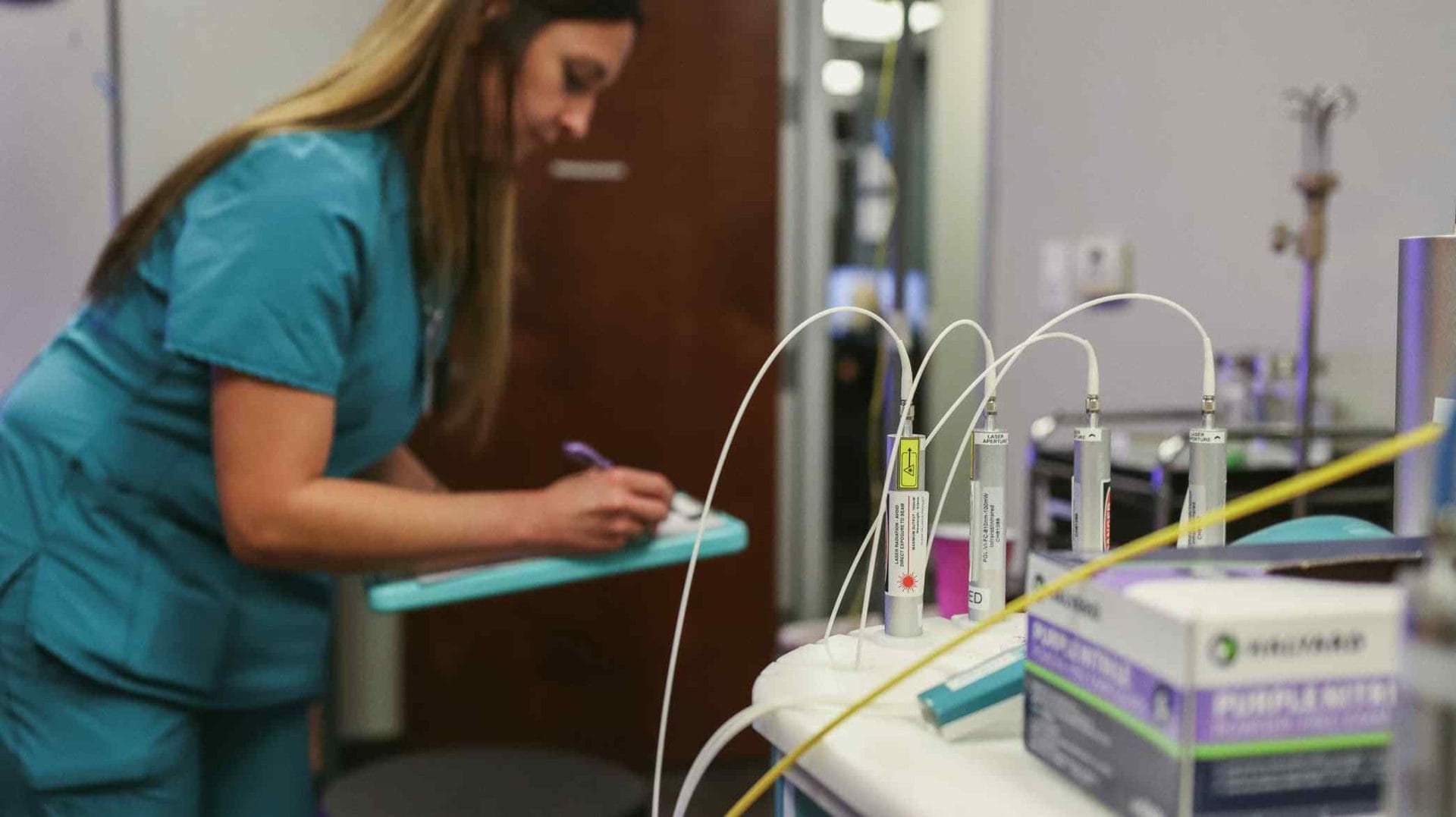The following guide covers chemotherapy alternatives for prostate cancer treatment.
As medical science advances, the battle against cancer has become less about brute force and more about precision.
This shift is especially evident in the range of chemotherapy alternatives for prostate cancer.
These integrative treatments aim to target cancer cells while sparing healthy ones, thus minimizing side effects and improving patients’ quality of life.
This article explores seven such alternatives, including Vitamin C IV Therapy, Resveratrol IV Therapy, Ozone Therapy, Curcumin IV Therapy, Photodynamic Therapy, Low-Dose Metronomic Chemotherapy, and Mind & Body Medicine.
Chemotherapy Alternatives for Prostate Cancer
1. Vitamin C IV Therapy
Intravenous Vitamin C therapy directly infuses high doses of vitamin C (ascorbic acid) into the bloodstream.
This intravenous therapy has emerged as a promising alternative to traditional chemotherapy for prostate cancer.
High-dose vitamin C has been shown to produce hydrogen peroxide, a powerful oxidant that can kill cancer cells.
Importantly, this effect is selective – vitamin C leaves healthy cells unharmed, thus minimizing side effects.
Although generally safe, Vitamin C IV therapy can cause side effects, including nausea, diarrhea, and stomach cramps. In rare cases, it may lead to more serious complications like kidney stones or allergic reactions.
Vitamin C IV Therapy vs Chemotherapy
Unlike chemotherapy, known for its severe side effects, Vitamin C IV therapy is generally well-tolerated, making it a viable option for patients seeking less aggressive treatments.
2. Resveratrol IV Therapy
Resveratrol IV therapy involves the intravenous administration of resveratrol, a naturally occurring compound found in grapes, berries, and peanuts.
Resveratrol is a potent antioxidant and anti-inflammatory agent. In the context of prostate cancer, it has been shown to inhibit cancer cell growth and induce apoptosis (cell death).
Although Resveratrol IV therapy is generally safe, it may cause minor side effects such as nausea, stomach cramps, or diarrhea.
Compared with chemotherapy
This therapy offers a more targeted approach, potentially leading to fewer side effects and a better quality of life for patients.
3. Ozone Therapy
Ozone therapy involves introducing ozone, a form of oxygen, into the body. This therapy has shown promise in inhibiting the growth of cancer cells.
Ozone therapy increases the amount of oxygen in the body, leading to the production of more white blood cells, which is crucial in fighting cancer.
It can also help alleviate some side effects of other cancer treatments, improving patients’ overall quality of life.
While generally safe, ozone therapy can cause minor side effects such as shortness of breath or flu-like symptoms.
Compared with chemotherapy
Unlike chemotherapy, which indiscriminately kills rapidly dividing cells, ozone therapy selectively targets cancer cells, reducing collateral damage to healthy tissues.
4. Curcumin IV Therapy
Curcumin, a substance found in the spice turmeric, has been recognized for its anti-inflammatory and antioxidant properties.
When administered intravenously as a treatment for prostate cancer, it displays promising results.
Curcumin IV therapy targets cancer cells, inducing apoptosis (cell death), inhibiting cell cycle progression, and suppressing inflammatory pathways.
This highly targeted action reduces damage to healthy cells, making it an effective alternative to traditional chemotherapy.
Some patients may experience minor side effects such as nausea or diarrhea.
Compared with Chemotherapy
Curcumin IV therapy offers a more targeted approach, potentially resulting in fewer side effects and improved quality of life for patients.
5. Photodynamic Therapy
Photodynamic therapy (PDT) is a form of light therapy that uses a photosensitizing agent, administered by mouth or injection, and a particular type of light to kill cancer cells.
PDT is a localized treatment, which means it only affects the area of the body where the light is directed. This precision minimizes damage to healthy tissues.
Potential side effects of PDT include skin sensitivity to light, burns, swelling, and pain.
Compared with chemotherapy
Unlike chemotherapy, PDT is a non-invasive treatment that selectively targets cancer cells, potentially leading to fewer side effects.
6. Low-Dose Metronomic Chemotherapy
Low-Dose Metronomic Chemotherapy is a unique treatment approach that uses insulin to enhance the effectiveness of chemotherapy drugs, allowing for lower doses and resulting in fewer side effects.
Low-Dose Metronomic Chemotherapy targets the insulin receptors on cancer cells, making them more receptive to chemotherapy drugs. This allows for a more targeted and effective treatment.
Patients may experience minor side effects such as low blood sugar or fatigue.
Compared with Chemotherapy
Low-Dose Metronomic Chemotherapy offers a more targeted approach to cancer treatment, potentially leading to fewer side effects and improved patient comfort.
7. Mind & Body Medicine
Mind & Body Medicine focuses on the interactions among the brain, mind, body, and behavior, and their impact on health and disease.
Stress reduction techniques, mindfulness, and other mind-body practices can improve mental health, reduce stress, and enhance the overall quality of life for cancer patients.
There are no known risks associated with mind-body medicine. However, it is important to note that these practices should be used as a complement to, not a replacement for, traditional cancer treatments.
Compared with chemotherapy
Unlike chemotherapy, mind-body medicine focuses on the psychological and emotional aspects of cancer treatment, providing a more holistic approach to patient care.
Chemo Alternatives for Prostate Cancer – Final Thoughts
The era of personalized medicine has ushered in promising chemotherapy alternatives for prostate cancer.
From Vitamin C IV Therapy to Mind & Body Medicine, these innovative treatments target cancer cells while minimizing damage to healthy tissues, offering hope for improved patient outcomes and quality of life.
However, it’s important to remember that the treatment choice should always be made in consultation with a healthcare professional, considering the patient’s overall health, the type and stage of cancer, and the potential side effects of treatment.
Frequently Asked Questions
What are some chemotherapy alternatives for prostate cancer?
Some chemotherapy alternatives for prostate cancer include Vitamin C IV Therapy, Resveratrol IV Therapy, Ozone Therapy, Curcumin IV Therapy, Photodynamic Therapy, Low-Dose Metronomic Chemotherapy, and Mind & Body Medicine.
What are chemotherapy alternatives?
Chemotherapy alternatives are treatments that do not use chemotherapy drugs. They can include holistic treatments, targeted therapy, immunotherapy, and radiation therapy.
When are chemotherapy alternatives used for prostate cancer?
Chemotherapy alternatives may be used for prostate cancer when chemotherapy is ineffective or not tolerated, as a first-line treatment, or in combination with chemotherapy.
What are the benefits of chemotherapy alternatives for prostate cancer?
Chemotherapy alternatives often have fewer side effects, take a more holistic approach, and can improve the quality of life for prostate cancer patients.
What are the risks of chemotherapy alternatives for prostate cancer?
The risks of chemotherapy alternatives for prostate cancer depend on the specific treatment. However, some potential risks include the treatment not being effective, side effects, and the treatment not being covered by insurance.








